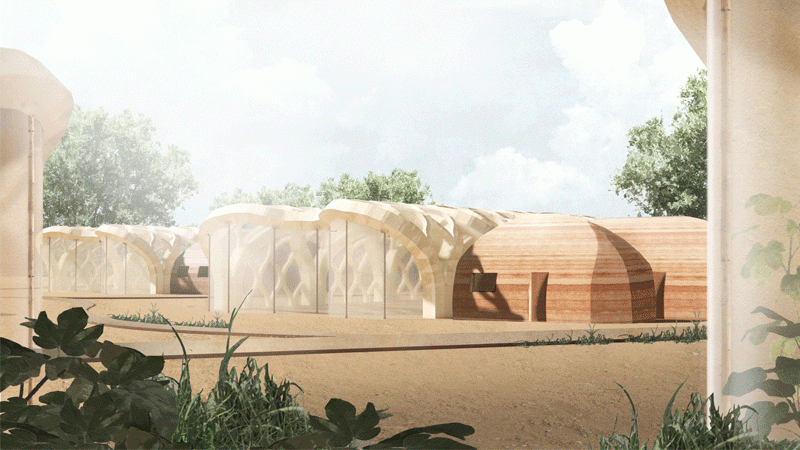Master of Architecture (MArch) (RIBA Pt II) student Eliza Hague has created a design for inflatable greenhouses made from shellac and bamboo to help communities in India grow their own food supplies.

Eliza’s designs were completed as part of the Architectural Productions module on the Master of Architecture (MArch) (RIBA Pt II) course. The studio she belonged to emphasised learning from nature and applying these ideas to designs which challenge the unsustainable designs of Architecture.
Her innovative design concept uses shellac-coated bamboo to create a material similar to paper which she used to create a greenhouse structure to encourage those living in Jaipur, India, to grow their own food. Eliza’s design aims to provide a more sustainable alternative to the current most popular greenhouse covering material in India, polythene sheeting, which needs replacing annually and creates excessive plastic waste.
She used locally-sourced bamboo to make a paper-like material and covered it with a shellac coating, a natural resin extracted from trees, which makes the covering weather-resistant and longer lasting. She then was able to use this material to fashion origami-like domes and beams to fashion a greenhouse. Eliza investigated the Mimosa Pudica plant as part of her studies, which closes its leaves in response to danger. The plant inspired the inflatable origami hinges of her greenhouse project, which mimicked the process of how the plant folds its leaves.
The beams can be collapsed to transport them as flat objects, and then inflated with air and covered with the bamboo-shellac material to form the greenhouse dome. Black solar balloons would also be used to sit between the infill beams and cladding for hinges, which can also expand and contract in reaction to the Sun’s heat to allow ventilation in the greenhouse.
Talking about the designs and her experience as a student at Westminster, Eliza Hague said: “The tutors in Design Studio 10 encourage you to analyse what it means to be truly sustainable in architecture, rather than integrating sustainability as a generic requirement which is often seen throughout the industry. This helped to develop my project into something that challenges the suitability of widely used materials and current lifestyles.
“In light of the pandemic, the idea that architecture can provide spaces to encourage self-sufficient living has become more prevalent as we rely on supermarkets more than ever. This notion stimulated the desire to create a design that not only responded to its local environment, but proposed innovative solutions to these challenges.”
Learn more about Architecture and Interiors courses offered at the University of Westminster.






